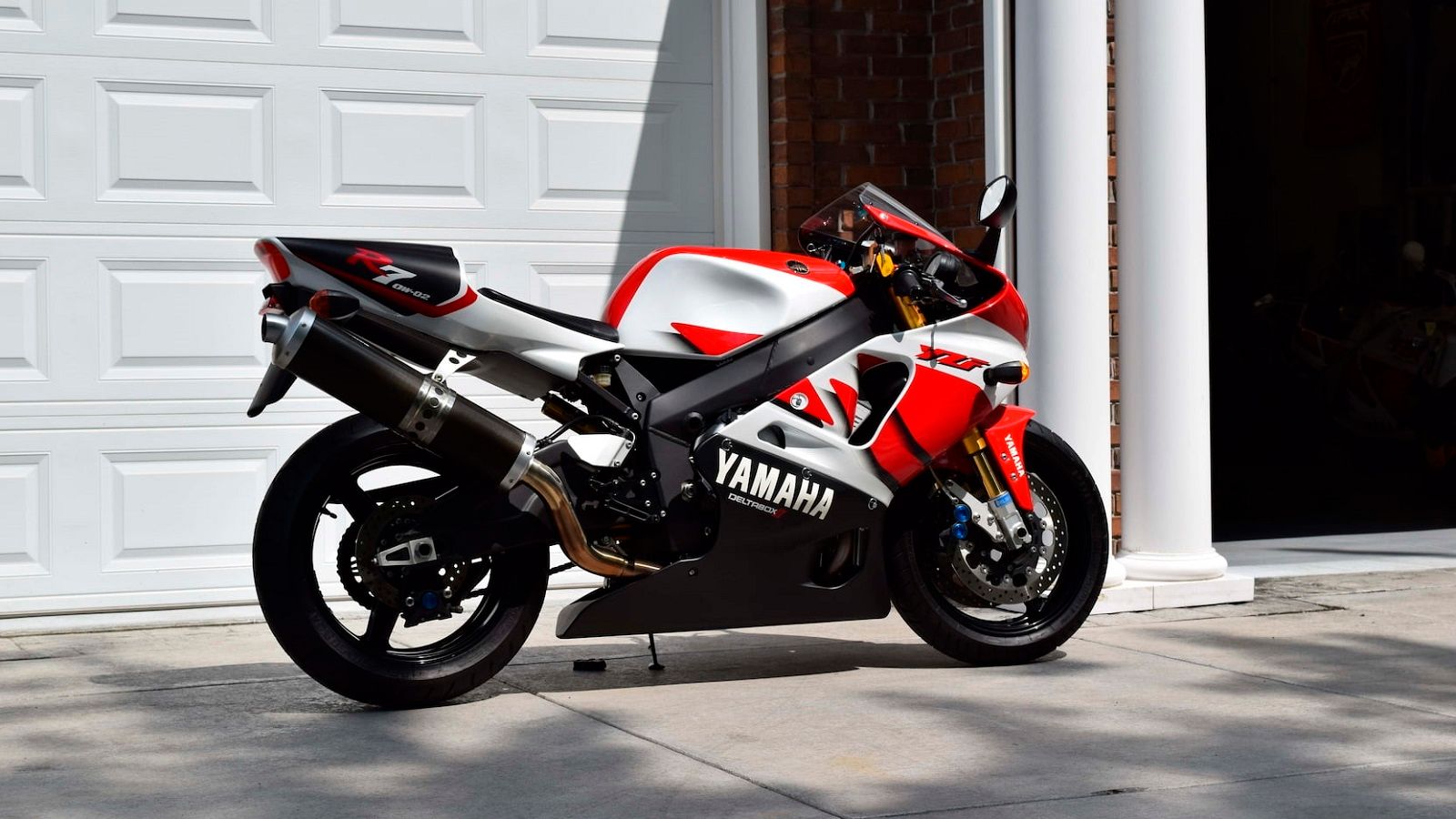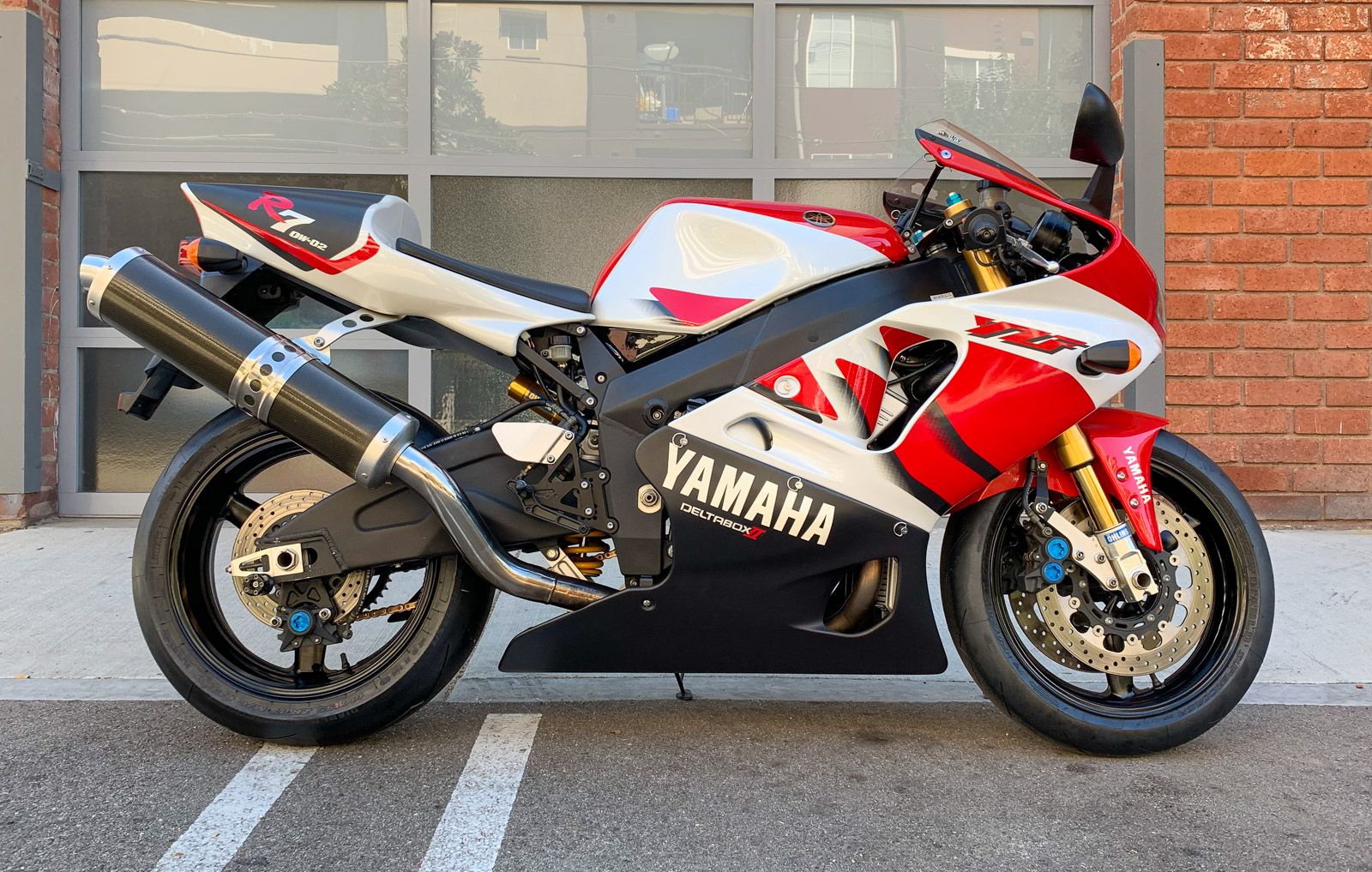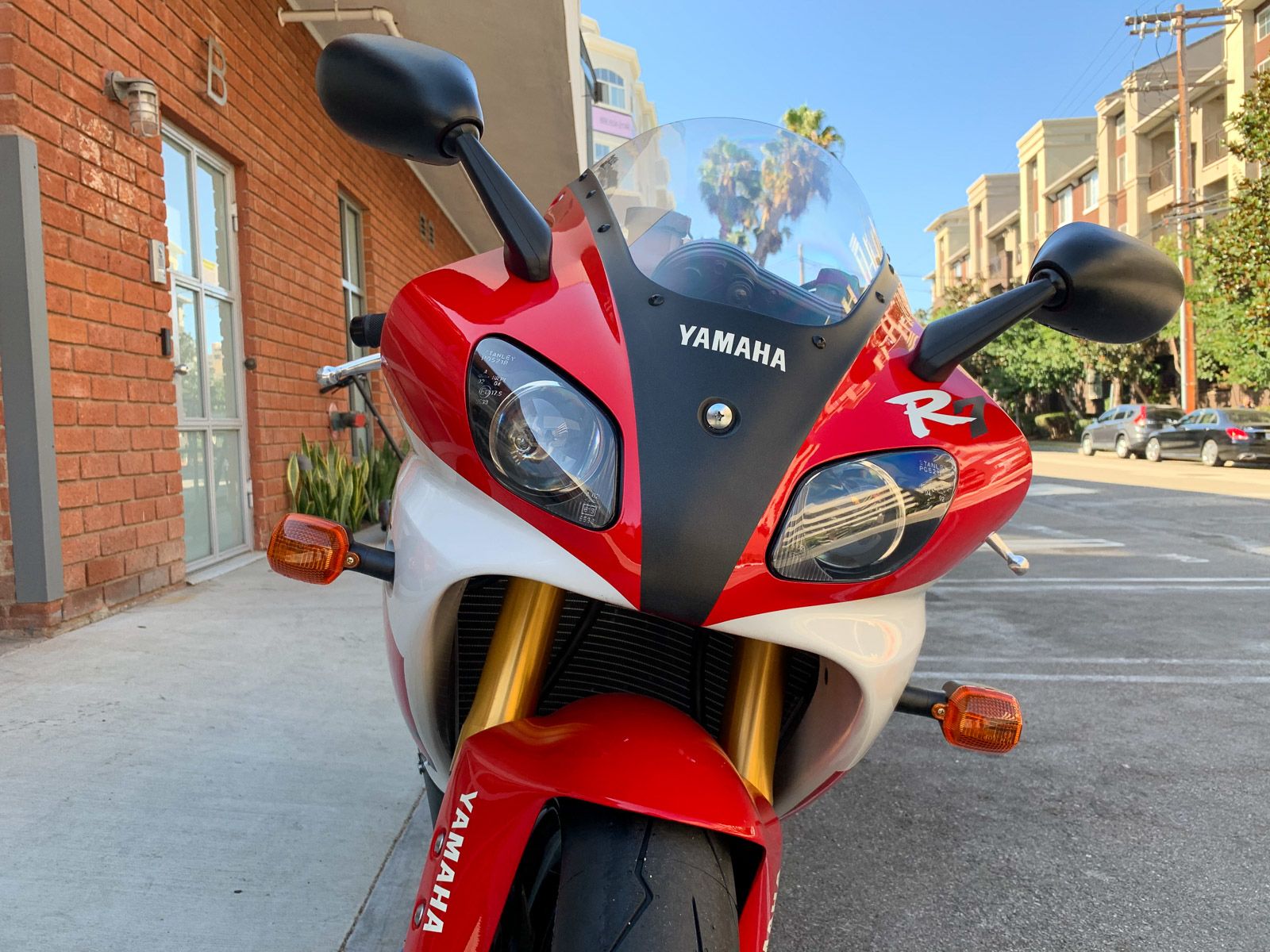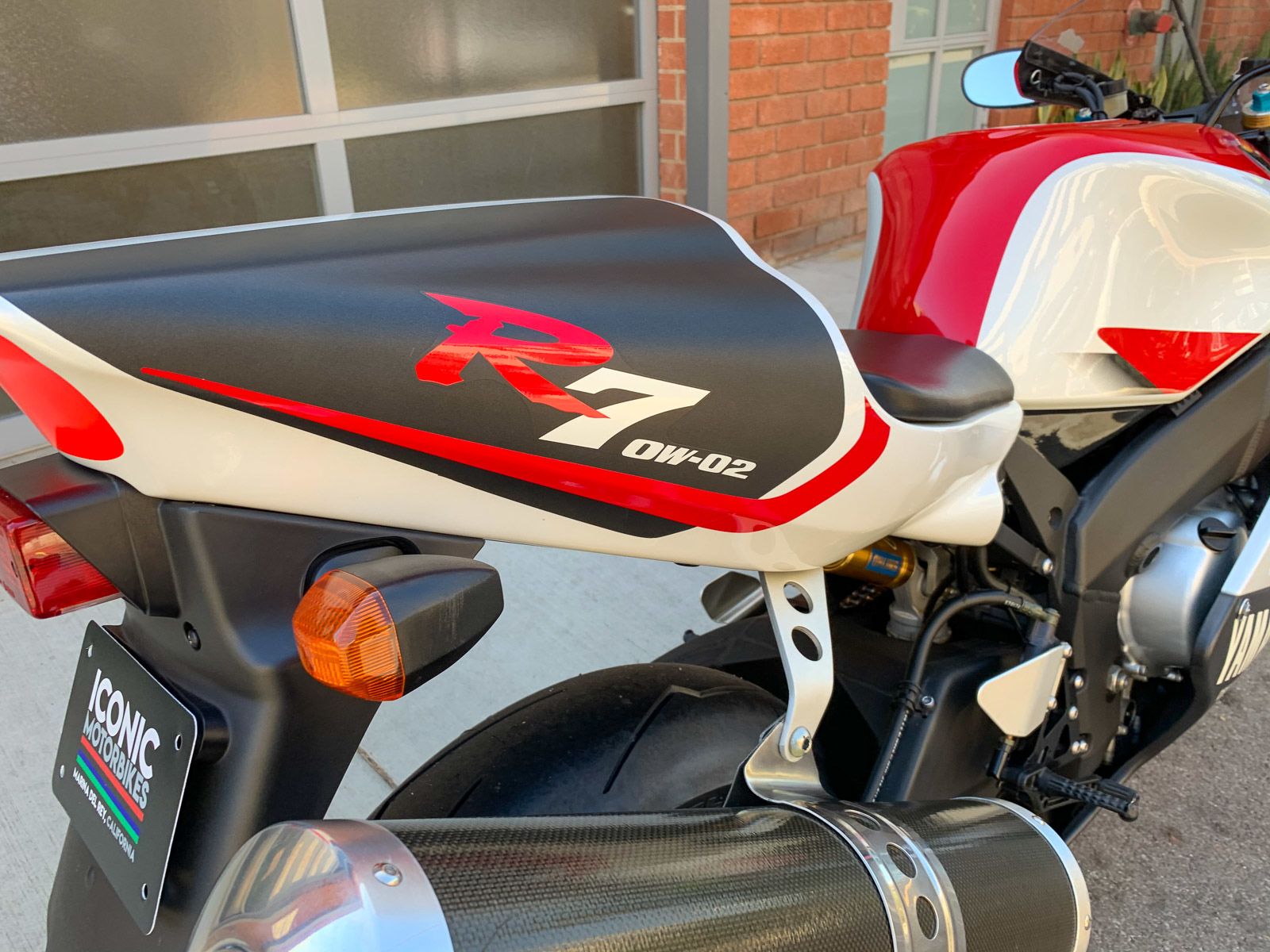Motorcycles go down in history because they’re famous, infamous, or just plain weird, and the Yamaha YZF-R7 is now highly sought after because it borrows a bit from each category. The YZF-R7 doesn’t have many wins on the track to establish itself as a racing legend even though it was a homologation special. So what makes this bike so famous, and why does it command such high prices in today’s market? Here’s some insight into the strange legend of the original YZF-R7 and how it came to be the highly collectible modern classic that it is today.
Few Were Made And Even Fewer Survived
The Yamaha YZF-R7 debuted in 1999 and only 500 units were ever produced, which was the established minimum for superbike racing. The most basic guiding economic principle is supply and demand and the supply of YZF-R7s is certainly low.
The bike was a superbike designed for the racetrack and big races like Suzuka 8 hours and the Superbike World Championship. The R7 retailed for $32,000 back in 1999 and race teams had priority for ordering the very limited run by Yamaha. Comparatively, an R1 of that era was less than half the price and far more dependable. All of this means very few R7s were purchased by street riders. Most R7s were either the casualties of intense racing or simply junked by frustrated race teams for their lack of reliability. Helping to cement the YZF-R7’s fame and low supply, is legendary superbike racer Noriyuki Haga who nearly won the 2000 WSB. Haga’s blazing exploits and fantastic performance in 2000 helped cement the motorcycle’s fame and simultaneously reduce its numbers with his flamboyant riding style.
The R7 Had Hidden Potential
Since so few of the R7s were being made, Yamaha built all the street production models to accommodate the most stringent of limitations, so they could be sold anywhere. This meant that in 1999 Germany dictated the power limitations of the YZF-R7 to 104 horsepower. The engine was a liquid-cooled 749cc inline-four with 20 valves. Yamaha limited the full race power in an ingeniously simple way by simply limiting the available slack on the throttle cable to 75% and deactivating one bank of fuel injectors. They would sell you a race kit activated that bank of dormant fuel injectors and an ECU upgrade which would allow you access to the full 160 odd horsepower. Not only were the race kits expensive, but they had the additional drawbacks of disabling the lights, horn, and signals, though it seems some clever folks did figure out how to save the light function with a bit of modification.
Infamously Unrelianble
To make the R7 competitive against the other bikes of the era, like the Ducati V-twin bikes that dominated in the 90s, it had to reach super high revs to be competitive, which meant part tolerances had to be very tight. Tons of titanium parts (valves and conrods), but all those tight tolerances meant that durability was not one of the YZF-R7’s traits.
The reliability issues are what caused a lot of teams to abandon the bike. Since the bike was a limited-run homologation special, getting replacement parts was not easy. There wasn’t even a consensus on what the particular problems of the bike were or how to fix them. Everything from reducing oil flow to larger oil flow to replacing the crankshaft (which Yamaha did the following year). Prices for these bikes remained high and as a result it was relatively easy to find New Old Stock all over the world for several years after production ended. Things have changed though, and the rare beasts have gotten their due as collector’s items. Even now sometimes they pop up for sale with little to zero miles on them. Many collectors don’t want to ride them at this point since they are so rare and the prices just keep going up. One recently came up for sale in 2021 for over $83,000 with zero miles on the clock. It is a shame though, because these bikes were designed to be raced, not hidden away to collect dust in a collection somewhere.




